Lime render has been used to protect and enhance buildings for around six thousand years and was found extensively in vernacular or early structures in Staindrop right up until the early 20th century. It has many excellent qualities that were recognised by ancient Egyptians and these are the reason for its enduring popularity.
The specialist renderers at MisterRender understand this amazing material and have the necessary knowledge, skills and experience to provide the very best finish with each project.
Not everyone in Staindrop is familiar with the process or even the material itself, so we're here to put this right and tell you about our professional lime render service.
The lime used in traditional renders is produced by heating limestone (calcium carbonate) to around 900ºC which burns off all the carbon dioxide to create calcium oxide. Fine sand and water are added to produce lime mortar.
Lime renders used in the construction industry are basically split into two types:
There are others, but these are the two most important ones that you need to know about.
Even so, it's worth mentioning a third type that you come across, called hydrated lime (or bagged lime), which can be confusing! However, this is simply a version of hydraulic lime in powder form. It is rarely recommended by expert plasterers as it does not provide the same quality of finish.
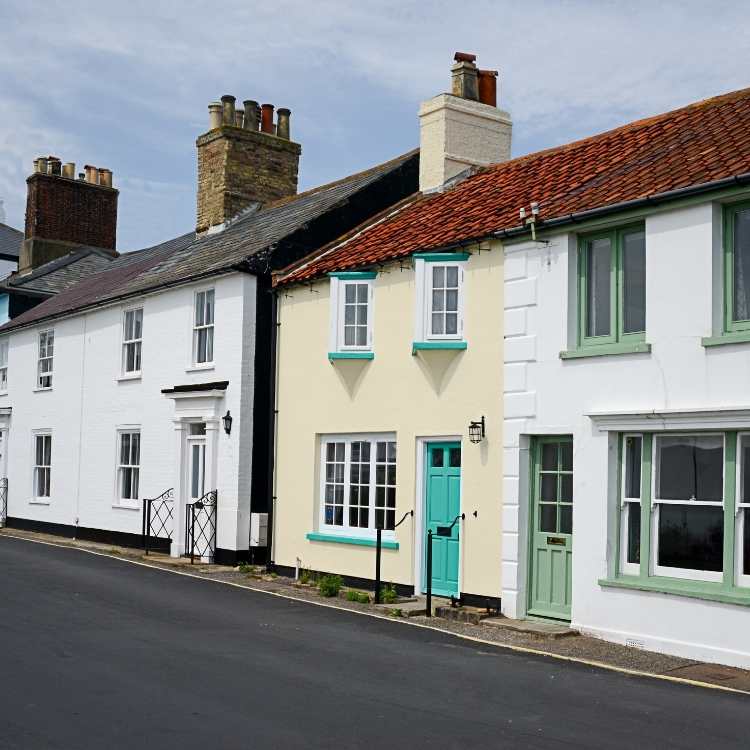
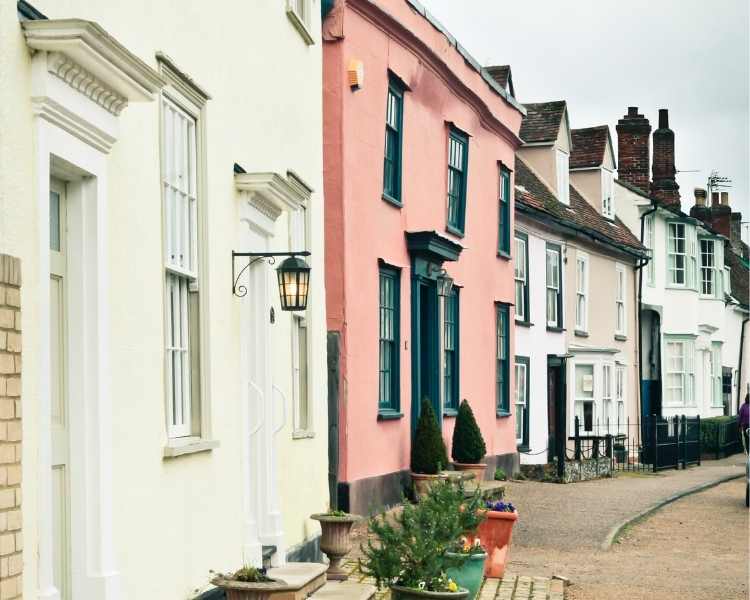
Essentially, it's all about how or where it is used and the ratio of each material in the mix. When applied as a thin layer on internal walls, it is usually referred to as lime plaster. The term render is typically used when the material is applied to external walls. Lime mortars are found between masonry and bricks in older properties and for repointing those buildings when necessary.
Lime mortars allowed moisture to escape from the joints between the bricks or masonry. This stops excess moisture from accumulating within the building, helping to avoid mould and mildew growing, or problems with rising damp.
Portland cement proved more popular due to its quick setting times and the fact that it sets to a much harder material. However, it is not suitable for old buildings as it traps moisture inside the walls and stops them from breathing.
The success or failure of a render coat depends on the quality of the application. Many homeowners enthusiastically tackle this job, only to discover that the surface cracks, crumbles or fails.
At MisterRender, our specialists follow a strict procedure to ensure a professional finish.
Here's a basic rundown of what's involved:
As is the case with so many processes in life, sufficient preparation is arguably the most important step. If the substrate (the wall surface) is not adequately prepared then the project is doomed to failure.
The wall surface must be cleaned thoroughly to remove grease, loose paint, mould, moss, lichen, vegetation, or any other contaminants. If necessary, fungicides or biocides will be applied. The wall should be brushed down to remove any loose debris.
Any damaged mortar or masonry must be repaired and the walls should be checked for structural soundness.
Although the new lime coatings will cover up any imperfections, they should never be viewed as a remedial repair. Once any necessary repairs are completed, you should have a reasonably flat and even surface to work with.
Many types of masonry and brick are very porous surfaces that draw moisture within them. On the other hand, impervious masonry and brick don't allow moisture in easily. The degree to which they do this is referred to as suction. Both poor or excessive suction could spell disaster; the newly applied lime plaster won't bond well with a weak and powdery interface and may separate from the wall mass.
Soft brick and dense blocks will need to be tested to determine their suction levels. Suction control is gauged using simple wetting tests, and MisterRender renderers will know exactly what steps to take.
They know that, generally speaking, lightly spraying impervious surfaces will be sufficient preparation to make them ready for the render. However, for old brickwork, considerable wetting will be required as very porous surfaces will lead to rapid drying that could ruin the lime render.
This step needs an expert eye and this is where many enthusiastic amateurs go wrong despite their best efforts. The trick is to achieve a thoroughly damp surface using a mist spray, but the wall must not be soaking wet or have any standing water remaining. It has to be just right, and this is something MisterRender lime plaster experts have mastered.
This is usually a three-stage process that takes place over several weeks as each coat is allowed to dry before the next is added:
The first coat is called the base coat or bonding coat as this forms a strong bond between the substrate and the render, providing a stable base to which subsequent coats will adhere.
It is often wetter than the other coats and sometimes has more gritty material added. This layer may be thrown onto the wall surface using a steel trowel, a method known in the trade as a harled coat.
Alternatively, it will be pressed firmly into place using a trowel (your MisterRender expert will know which method is best for your walls).
Either way, the render will be applied to a thickness of between 9 and 12 mm.
The surface of the lime render is scratched with a three-pronged tool, usually in a diamond pattern, to aid in bonding with further coats. This is why you'll often hear it also described as a scratch coat.
Although it is laid as level as possible, there is no need to straighten it out too much as this takes place later.
This is sometimes called a levelling coat or floating coat, and is applied about one week after the base coat is partially dried (ideally to a leather-dry feel - it's something that MisterRender specialists instinctively know).
Again, it is applied to a thickness of between 9 and 12 mm and this time it is levelled using a timber or polyurethane float (hence the two alternative names!). This has a protruding point that scuffs the surface to provide a key for the final coat.
If the levelling coat isn't thick enough to achieve a flat and even surface, more render can be added (to a maximum thickness of 12 mm) to resolve this. Underlying layers will be scored to allow better adhesion, as with the scratch coat.
Also called the finish coat (or finishing coat), this is the layer that will be on display, so it needs to be smooth and level. To ensure the best results, a final coat has more lime added along with finer sand.
This makes top coat plasters more prone to shrinkage cracks, especially as the finish coat is only between 5 and 7 mm thick.
The final stage involves the use of a steel trowel, wooden float or sponge, depending on what kind of finish is required.
Your MisterRender lime rendering specialist knows all about the dangers of rapid drying and will take great care to prevent any adverse reaction, just as they will on all previous coats.
The trick is to use appropriate sands, get the right consistency in the lime plaster, and avoid excess shrinkage by undertaking the plastering process in the right conditions.
Warm weather with strong sun, wind-driven rain and cold conditions will all be a concern during the render's early set. Newly applied render is vulnerable and needs to be protected from rapid drying and needs to be kept wet for around seven days after application.
Using their specialist knowledge, you can trust MisterRender lime plastering specialists to deliver a beautiful, defect-free lime render, from the first coat to the finish coat.

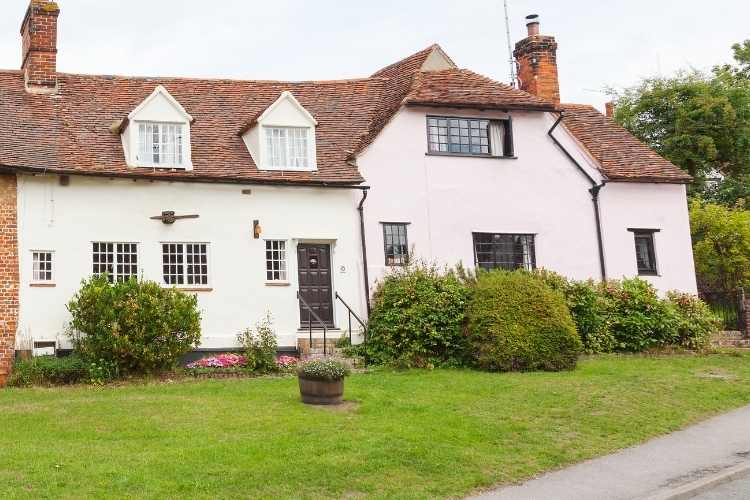
It depends on the thickness of the finished render and the weather conditions, and each coat must be dry before the next is applied.
When the project is completed the lime renders must be protected from frost for three months. It will take between one and four months to dry completely, but may take up to a year to fully cure (harden).
The curing process is essential to the success of the project to achieve the correct hardening and provide a protective layer for your property that will last for many years.
This traditional render fell out of favour with the invention of Portland Cement in the 1750s, and more recent breakthroughs in render technology have pushed it further to the fringes.
Even so, there is still a need for it, and for skilled plasterers like those at MisterRender, especially when dealing with buildings constructed before the 1930s.
Lime render is still recognised for its benefits, including the following:
Vapour permeability, or breathability, is important as it allows water to pass through and escape, in gas or liquid form. This dramatically reduces the risk of moisture accumulating between the render and the wall which can result in mould and damp.
All professional plasterers, including those at MisterRender, appreciate the excellent workability of lime render. It's a pleasure to work with although it can be temperamental and must be handled correctly.
Lime mortars, lime renders and lime plasters are all exceptionally durable, protecting the property for many years. The fact that countless heritage buildings are still standing today is proof of this fact! During the hardening process, it effectively turns back into limestone, providing a protective shell.
This is why MisterRender is proud to continue this legacy and provide a professional lime rendering service.
The word 'sustainability' is used a lot these days, and it's something that MisterRender takes seriously. Lime render easily qualifies as sustainable material as it is considered carbon neutral. Any carbon dioxide emitted during the manufacturing process is reabsorbed over the years as the render, mortar or plaster coat dries.
Many new render options include synthetic ingredients and few are as versatile and environmentally friendly as lime plaster.
Lime renders are far more flexible than many other types, which means that they can cope with minor structural movement without cracking. In comparison, cement-based renders tend to crack easily as they are rigid and inflexible.
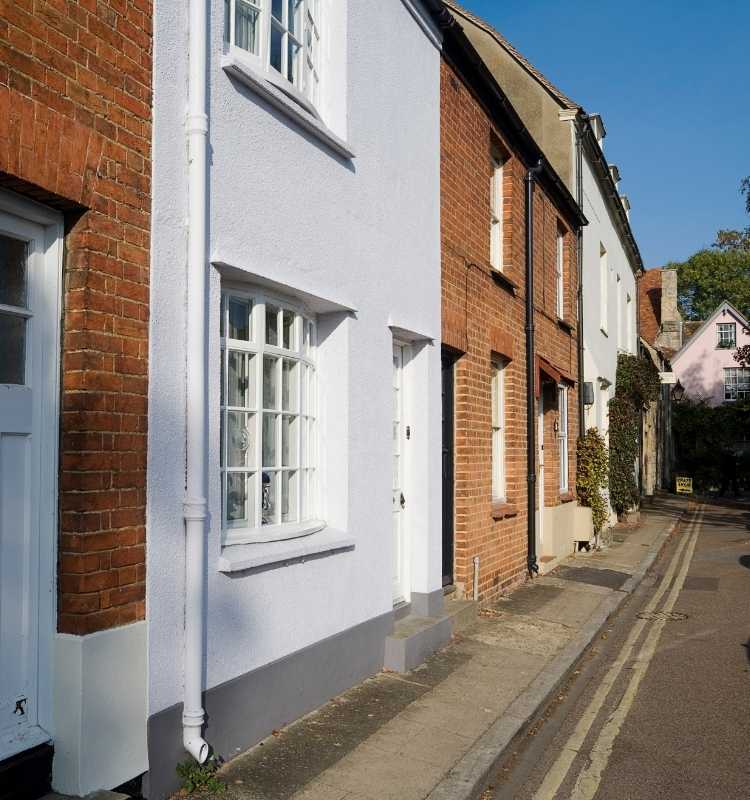

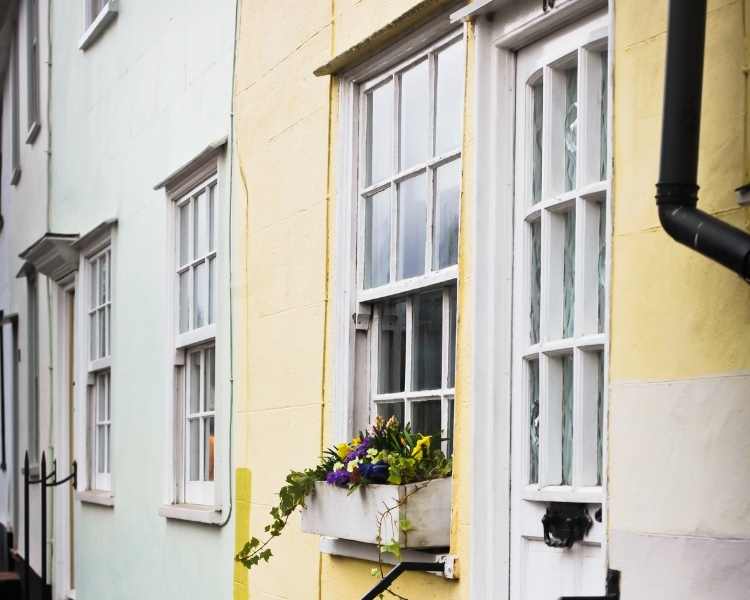
Not as such - this is an excellent, natural material, but it has to be used in the right context and applied properly, which is where MisterRender can help you. Each project is treated individually and we find the best solution for your property.
The main issues are connected with basic preparation, getting the mixture right and applying it correctly. And, as we mentioned above, preparation is key to a successful finish that will last.
Not exactly a negative point, but the weather may affect the process and the outcome. This must be taken into account when arranging for your lime render project to go ahead; there may be delays to the process if the weather is not right.
Frost, bright sunlight, rain or wind can affect the drying process and spoil the finished result. Ideally, the application should never take place in temperatures below 5º celsius which is why most projects are undertaken in warmer months.
There's no getting away from the fact that lime plastering can be a lengthy process. In a modern world ruled by convenience and speed, this can be hard to accept.
However, this is a traditional method that can't be rushed if you want it done properly. And when MisterRender does the job, you can be confident of a professional finish. And in order to achieve this, we won't hurry the process along; we take pride in each and every project and to this end, we will take the time to ensure the very best results.

Although it can be applied to virtually any structure or surface, it is best suited to old houses and period properties, especially those with lime mortar. Using cement-based renders on these buildings would be a mistake as the lime may react with the cement.
Although there's no hard and fast rule, lime renders are mainly used in properties built before 1919 but possibly as late as the 1930s. Most older buildings constructed using solid masonry, cob (mud, straw, water and lime), and lath and plaster will most likely have an outer shell of lime render. The stones will also be joined using lime mortars.
Most of these buildings won't have a cavity in the wall mass, and some won't even have a damp-proof course. Because of this, they need all the help they can get to rid themselves of any excess moisture, which is why lime render is so important.
It is always best to replace these with new lime coatings rather than use modern alternatives, as lime render allows the building to behave as it was intended. They need to breathe, or moisture will accumulate, resulting in damp and mould that will eventually affect the structure.
Of course, lime render can be used on modern buildings, so be sure to discuss this with us for any advice and recommendations.
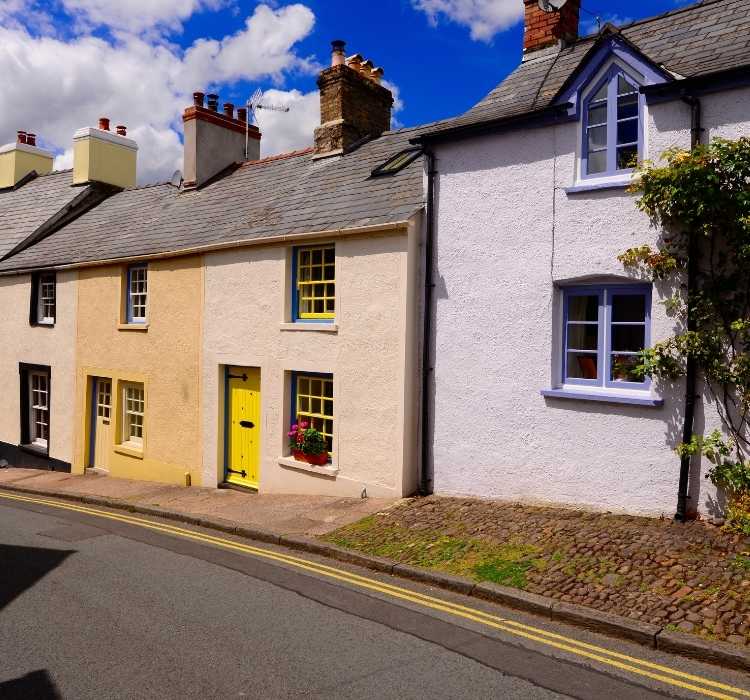
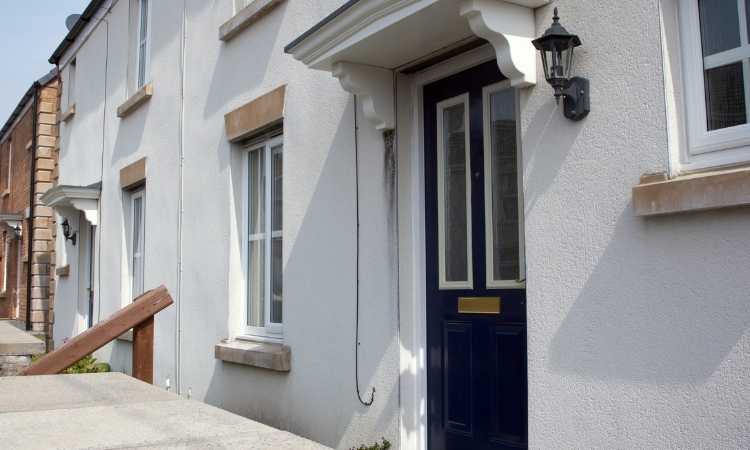
While modern renders may carry a lower price tag, this is purely because they are applied more quickly. To produce the best possible finish, lime render has to be applied with great skill and care, allowing time for each coat to dry.
Comparatively speaking, it costs more than some other renders. But when you consider the benefits, lime render is a sound investment, particularly for period properties that need extra care and attention.
To answer this, take a look at some of our heritage buildings that were rendered hundreds of years ago. Though many of them haven't been maintained or looked after for many years, the original lime render still remains.
With proper care and attention, your new lime render could last for several decades, maybe even a century or more before it needs renewing.
Much depends on the quality of the material and the expertise of the plasterers. And with MisterRender, you can be assured of the highest quality in both instances.
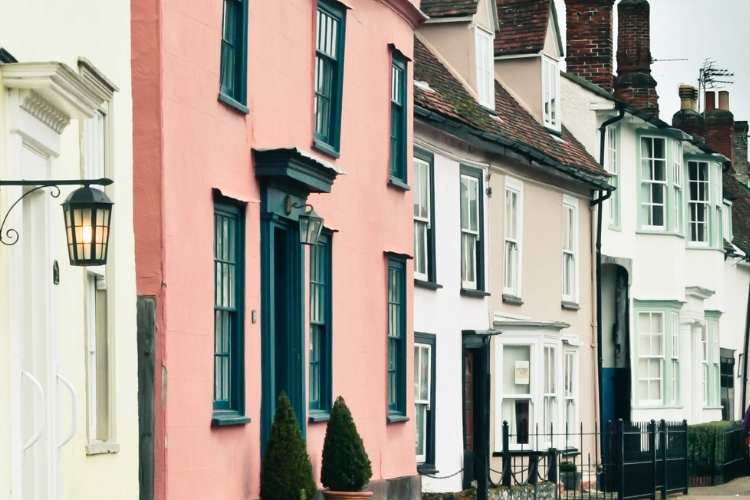
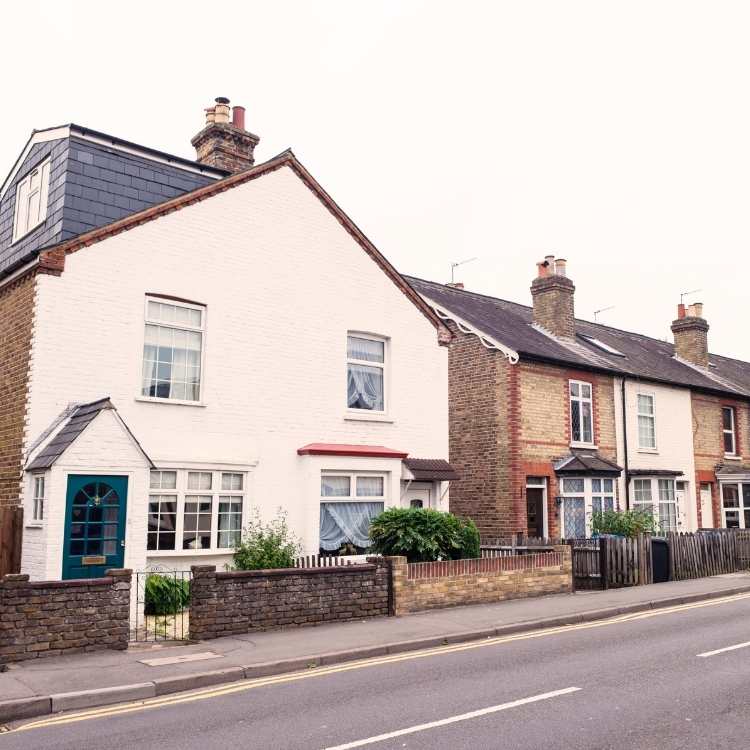
During the rendering procedure, hessian or tarpaulin sheets are often used to protect the lime plaster from strong sun as individual layers are added. Plastic shrinkage cracks can appear within 48 hours if care is not taken to prevent rapid drying.
It's important that the plasterer doesn't move on too quickly, or this will result in case hardening. Any free lime within the mixture floats to the surface, affecting the stability of the render. This could cause the render to fail.
One point to keep in mind is that hydraulic lime render should never be applied externally until the spring.
Once the render coat is fully cured*, you can protect it using an appropriate paint. Ideally, a traditional limewash should be used but some masonry paints are also compatible.
However, please note that not all masonry paints are suitable. Many will stop the lime renders from breathing, which defeats the object of using amazing traditional material.
Limewash is excellent, but it does need refreshing every three to seven years. This will ensure that it looks its best and continues to protect the lime render beneath. You could opt to use a highly-breathable silicate paint, as are longer-lasting and don't need repainting as frequently.
*curing times vary, but you should allow for around one month per 5 millimetres of thickness.
Whatever your lime render project, MisterRender is your first choice. Our experts are proficient in all aspects of traditional renders and have a wealth of experience dealing with lime render, lime mortars and lime plaster.
While the procedure might look easy enough, it's a job that has to be completed with care, patience and a real understanding of the materials.
If you want a professional finish that will stand the test of time, then we're the people to call.
Contact our Staindrop team today for friendly advice and guidance, or to discuss your individual project.
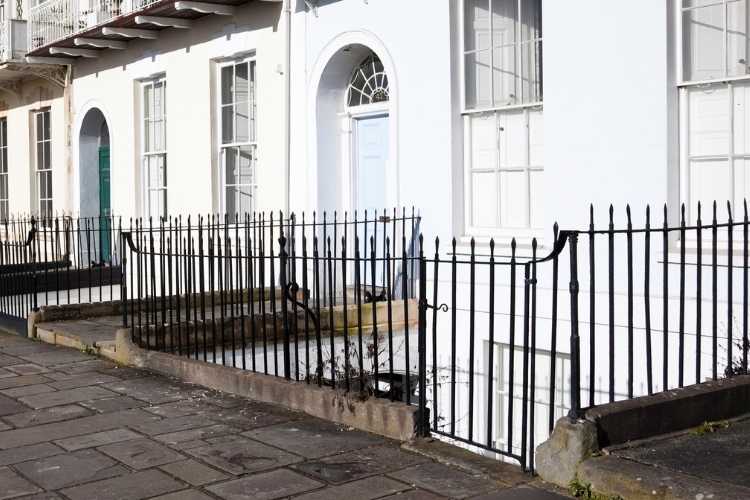

Lime render can last decades, 10-20 years or more but the paint often used on it called limewash does need extra coats every 5-7 years.
Lime is added to the mix to strengthen its flexibility and prevent it from breaking when it dries. Hydrated lime is the most acceptable type of lime for rendering. colour-changing pigments or chemicals that promote bonding and drying could also be added to the rendering mix.
Lime-based renders, such as Baumit StarContact or MC55, are more flexible than cement renders, minimising the probability of cracking and the requirement for unattractive expansion joints.
Lime plaster is porous, allowing moisture to diffuse and evaporate. It becomes impermeable when appropriately treated with pozzolanic chemicals and animal fat.